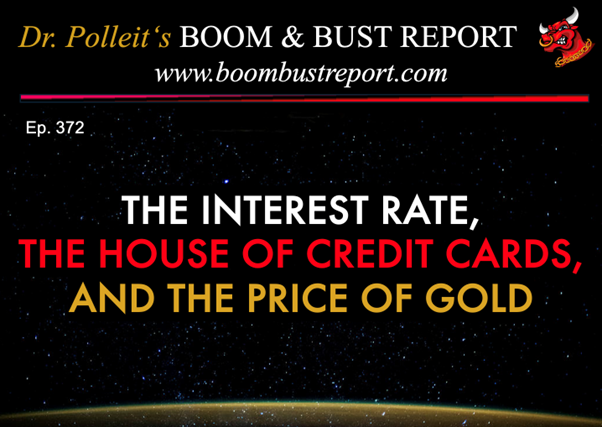The United States’ public debt has lost its last top credit rating. On May 16, 2025, Moody’s downgraded the U.S. credit rating from Aaa (negative outlook) to Aa1 (stable outlook). The reasons: escalating government expenditures coupled with tax cuts, leading to high federal deficits. Moody’s also highlighted rising borrowing costs driven by the growing public debt and increasing capital market interest rates.
Although Moody’s decision is tardy, it aligns with other agencies. Standard & Poor’s and Fitch had already downgraded their U.S. credit ratings: S&P in 2011, and Fitch in August 2023.
Still, one might wonder: Why is Moody’s reacting now? And why is the Federal Reserve so stubbornly refusing to lower interest rates? Is the aim to sabotage the Trump administration’s plans by having the “Wall Street elite gang” deliberately driving up credit costs, triggering chaos in the financial and economic system while benefitting from it?
There’s no doubt: Rising borrowing costs in the U.S. destabilize the debt pyramid. They could even have the potential to plunge the global financial and economic system into severe turbulence. In Q1 2025, U.S. public debt totalled 36.2 trillion U.S. dollar—almost 122 per cent of gross domestic product (GDP). Interest costs amounted to a staggering 1.1 trillion U.S. dollar—or 3 per cent of GDP and roughly 16 per cent of total government expenditures.
If U.S. debt continues to grow faster than the economy, the debt-to-GDP ratio will climb, debt sustainability will weaken, and investors will demand higher interest rates. As interest expenses rise, and unless spending is cut, or revenues are increased, the deficit widens, necessitating even more borrowing. If unchecked, this cycle—though it may continue for some time—ultimately leads to national bankruptcy.
This problem is not unique to the U.S. If U.S. government debt loses credibility, the debt of other nations will face scrutiny too. As America sets global interest rates, rising U.S. borrowing costs can be expected to increase bond yields in other countries.
And their debt situations are equally dire. For instance, Italy’s public debt is 135 per cent of GDP, France’s is 113 per cent, the U.K.'s is 96 per cent, and Japan’s a staggering 263 per cent—excluding unfunded public pension obligations, which can amount to an additional 200 to 400 per cent of GDP across European countries.
In total, U.S. public sector debt in 2023 was estimated at approximately 90 trillion U.S. dollar, or roughly 340 per cent of GDP. Germany’s total debt was estimated at 448 per cent of GDP.
As government bond yields rise, so do the interest rates on consumer loans, mortgages, and corporate credit. Debt financing becomes costlier, and some borrowers who relied on perpetual debt in a low-interest rate environment may face default. That said, it's not just government debt at risk—private sector debt is vulnerable too.
Moreover, rising interest rates expose over-consumption and misallocations that low(er) interest rates had had previously encouraged. In short: The boom turns to bust. And if economic output collapses, any lingering confidence in public debt can evaporate quickly. What then?
If cutting government spending is politically unfeasible, and the scope for tax hikes has been exhausted, then both the rulers and the ruled will likely consider reducing or deferring interest and principal payments on their debt.
However, they will likely view the running of the central bank’s electronic printing press as the lesser evil to alleviate themselves of their overwhelming debt load. The history of sovereign defaults (and the subsequent waves of high inflation) provides ample evidence.
To prevent interest rates from spiralling out of control, however, central banks will likely intervene. The U.S. central bank has done this before: from 1942 to 1951, it pursued a policy of interest rate control, and more recently, during and after the global financial crisis, the Federal Reserve bought long-term bonds and held their yields artificially low.
Meanwhile, the expanding money supply translates into higher goods-price inflation, so that nominal market yields, after adjusting for inflation, that is: real yields, turn negative. This and the debasement of the purchasing power of money reduces the actual real debt burden in the economy. Debtors benefit, creditors and money holders suffer.
If U.S. President Trump genuinely wants to dismantle the Deep State, counter the globalist “Great Reset” agenda, and halt the globalists’ U.S. military overreach, he must slash government spending, restrict government access to easy money—and, above all, abolish the U.S. central bank.
Without these reforms, America—and much of the Western world—will continue sliding towards economic, financial, (geo-)political chaos and war, most likely leading to a (neo-)socialist, tyrannical world (dis-)order. Attempting to prop up the idea of preventing the collapse of the house of credit cards with ever-lower interest rates is a path to catastrophe.
Given the world’s current state of affairs, gold remains one of the few ‘safe havens’ available to investors. It has two key attributes: Its market value cannot be eroded by central banks’ inflation policies, and the yellow metal carries no counterparty, or: credit default, risk. In fact, it has already become the world’s most trusted reserve currency.
Indeed, the price of gold has surged substantially—45 per cent in the past 12 months, and 84 per cent in the past three years. Yet, given the precarious debt situation in major Western economies, coupled with a widespread lack of understanding of the need to abolish the fiat money system, there is strong justification to hold and build a gold position in the investment portfolio.
If you want to learn more how to invest your money wisely, read Dr. Polleit’s BOOM & BUST REPORT. It’s designed for investors who seek not just to preserve but to grow their wealth—and who are looking for recommendations for action with clear, prudent guidance. All information can be found at www.boombustreport.com. I look forward to your visit—and thank you for your attention.

